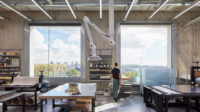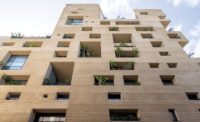Though perhaps best known today for its ladies’ silk scarves, French luxury brand Hermès started out as a saddlemaker and still produces numerous leather goods, among them the famous Kelly purse, launched in the 1930s and given its current name after Princess Grace of Monaco was spotted hiding her pregnancy behind one in the late 1950s. With a 2022 turnover of $12 billion and net profits of $3.7 billion—a 38 percent increase over 2021—the non-public company, owned and run by descendants of the founders, is in full expansion, opening new sites of manufacture and scouring France for a labor force skilled enough to work to its extremely exacting standards (there’s currently a six-to-seven-year waiting list for a Kelly, which retails at around $7,500).
Hermès’s nine French production hubs are scattered around the country. In Normandy, the firm operates facilities near Louviers, 60 miles northwest of Paris. This January, Hermès’s Norman production capacity was greatly increased by the opening of a brand-new leather-goods workshop, a 66,700-square-foot building that, once running at full steam, will employ 260 craftspeople. Designed by Paris-based Lebanese architect Lina Ghotmeh, who won the 2019 design competition, it is intended as a paragon of sustainable development.
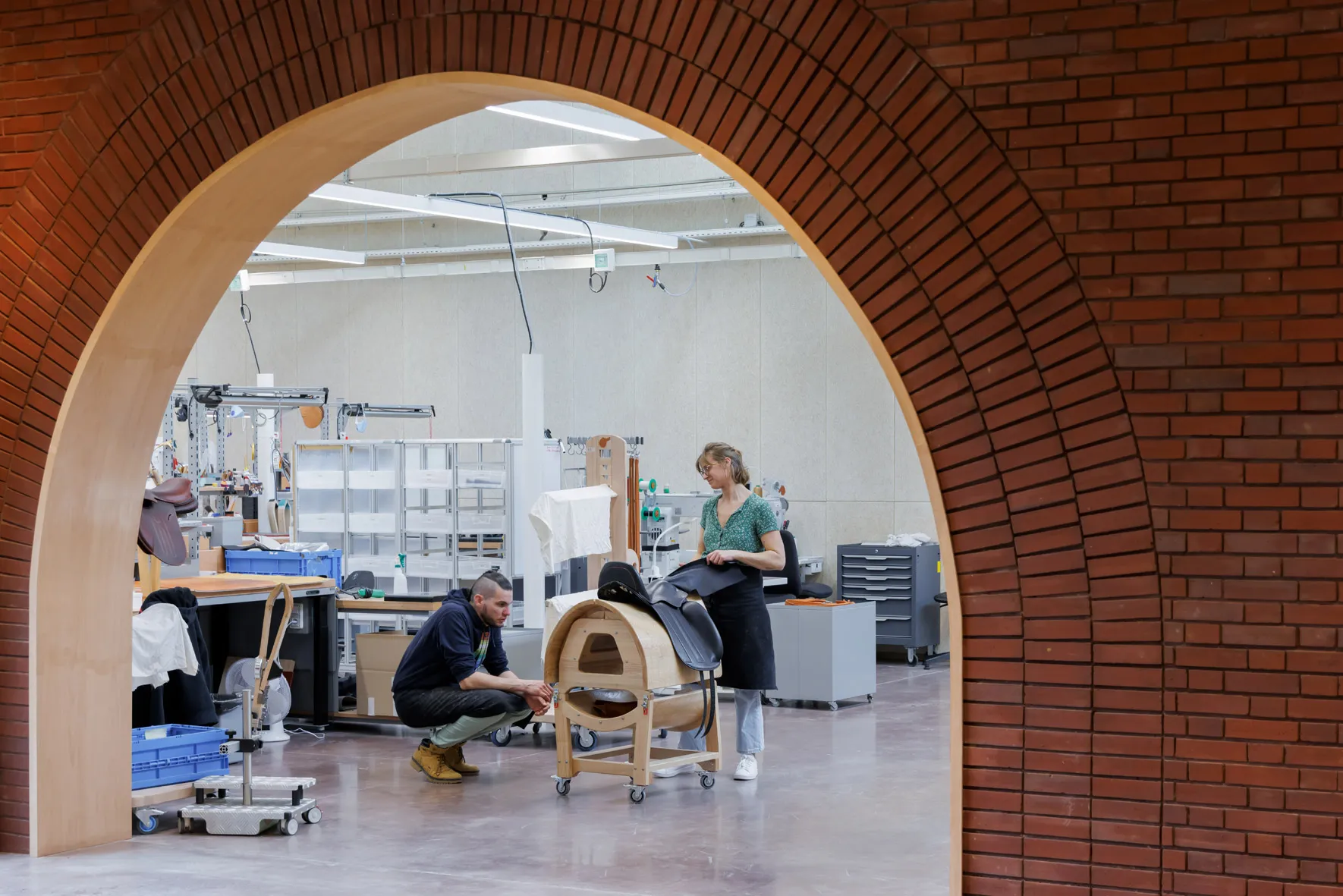
The fashion brand's new workshop will employ up to 260 craftspeople. Photo © Iwan Baan
“Hermès runs a policy of responsible, structured growth,” says François-Pierre de Feydeau, head of Hermès’s Norman hub. “Among other commitments, the family has decided that new facilities should only be built on brownfield sites.” So it is that the leather workshops find themselves in an area of housing and light industry that developed over the course of the 20th century to the north of Louviers, with forested hills to the west and rolling fields to the east. “There’s beautiful nature nearby, but a lot of the industrial buildings show little care in their design,” says Ghotmeh. “The challenge was to create a place you don’t identify as industrial, to go beyond the stigmas of what a place for making can be—to render it timeless in a certain way, and in resonance with the wider natural landscape.”
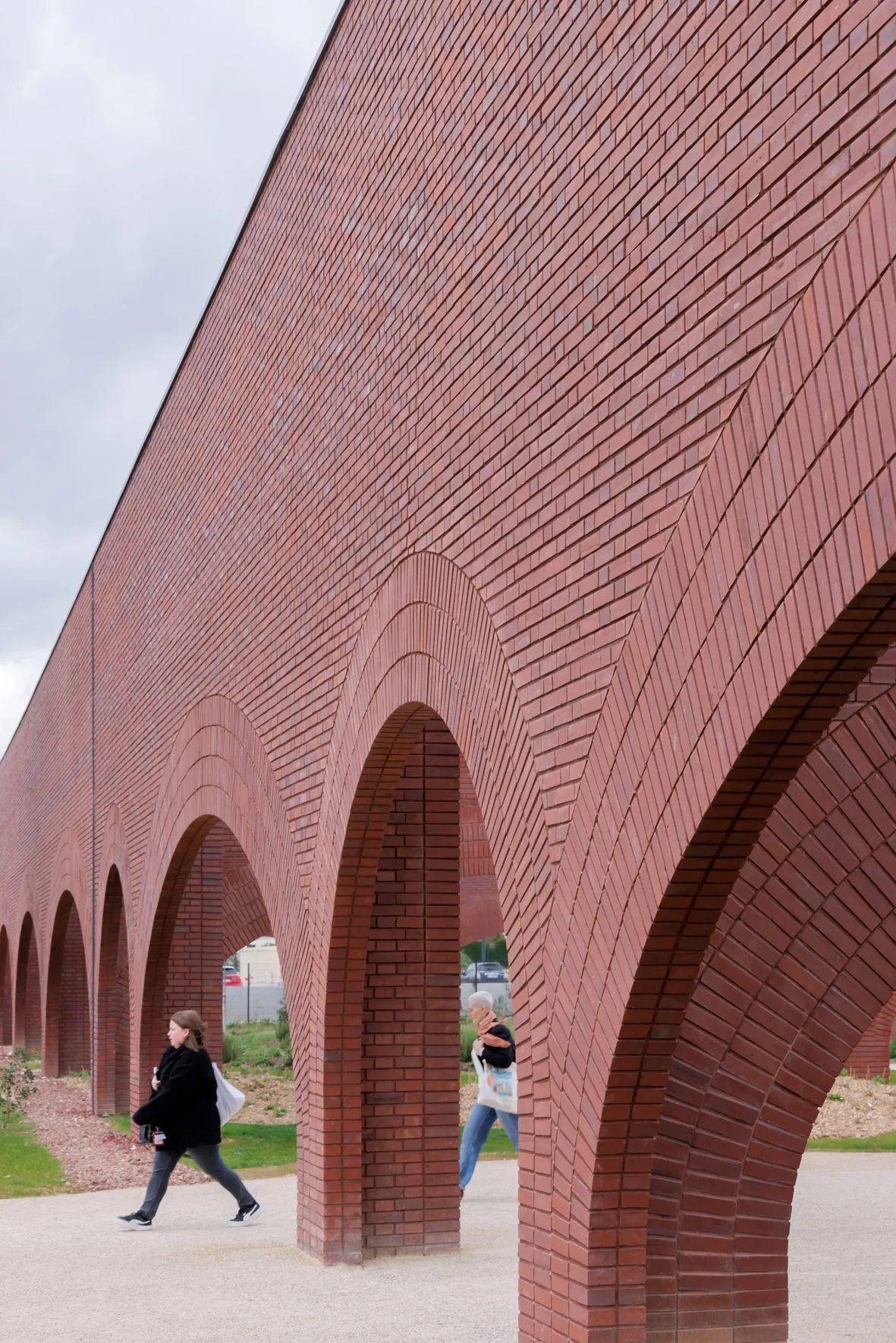
Brick arches are used throughout parts of the exterior. Photo © Iwan Baan
Located at the northern end of its generous rectangular site, which is bounded to the south by the inevitable parking lot, the single-story building is a giant square in plan, 90 by 90 meters (295-feet square). “As well as recalling the shape of Hermès’s famous scarves, the square plan is compact, which not only helps lower energy consumption but reduces distances within the workshops,” says Ghotmeh. “We have high output targets,” adds Feydeau, “meaning each piece has to be made within a certain amount of time. Workers’ movement around the shop floor must therefore be minimized.” All the workshops, with the exception of the saddle-making studio, are lined up along the northern facade (Kelly purses are made there), where they receive cool, even light, while batteries of north-facing sawtooth roofs bring in yet more daylight, their unglazed south-facing slopes carrying solar panels that, along with geothermal heating and cooling, are intended to allow the building to produce more energy than it consumes. Organized like a Roman town with its decumanus maximus (main east–west thoroughfare) and its forum—in Hermès-speak, the “village square,” a central unprogrammed space where staff can meet informally—the complex was planned on a 10-meter-wide bay module, the perfect width, Ghotmeh explains, for an atelier with two rows of tables. In keeping with Hermès’s time-motion traditions, the ateliers are grouped into threes—a cutting shop, flanked on either side by manufacturing studios.
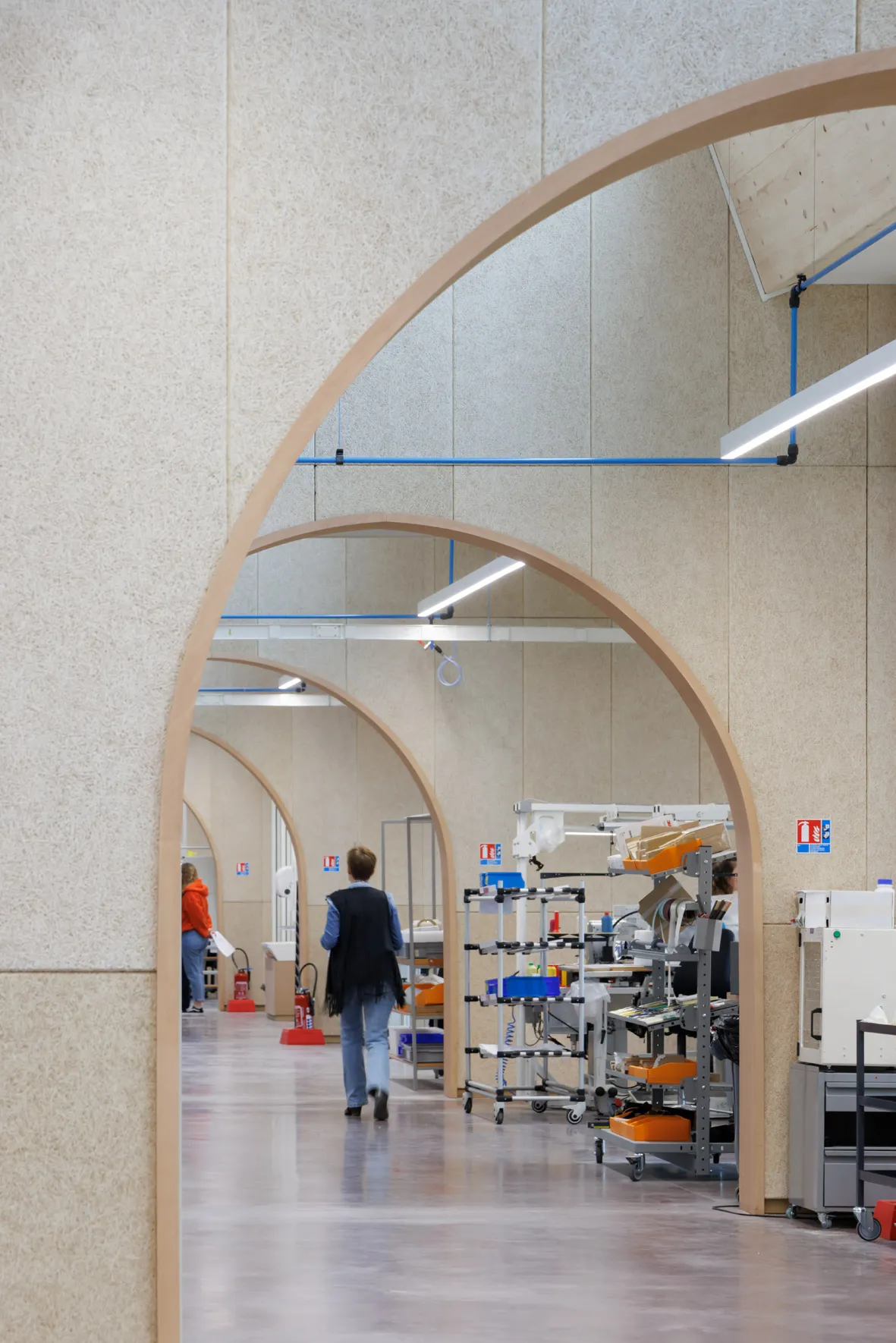
Photo © Iwan Baan
In this part of Normandy, the traditional construction material is brick, which Ghotmeh has used for the building’s external envelope. “Not only is brick a local material, it’s made by hand and is dimensioned for manual use, so its presence in the architecture reflects the trace of the hand in Hermès’s craft manufacture,” she explains. Produced with traditional methods at a brickyard some 40 miles away, the 500,000 bricks were “fired for longer at a high temperature to achieve deep red and violet hues.” Elongated brick arches express the 10-meter-bay modules, while the walls above them rise high enough to hide all the HVAC machinery on the roof. Beautifully laid in Flemish bond using mortar colored with brick dust, the self-supporting envelope (reinforced here and there with concrete to preserve the purity of the design) encloses a timber-framed building (a mix of glulam and solid wood) whose interiors are divided with timber partitions in a drive for economy and embodied-carbon reduction. It is the first manufacturing facility to achieve France’s E4C2 environmental rating, a certification level that requires net zero energy and entails adherence to carbon limits, including those relating to construction materials. The building uses bioclimatic principles—northern orientation, tree shading, natural ventilation, rainwater reuse—to help achieve its targets.

1
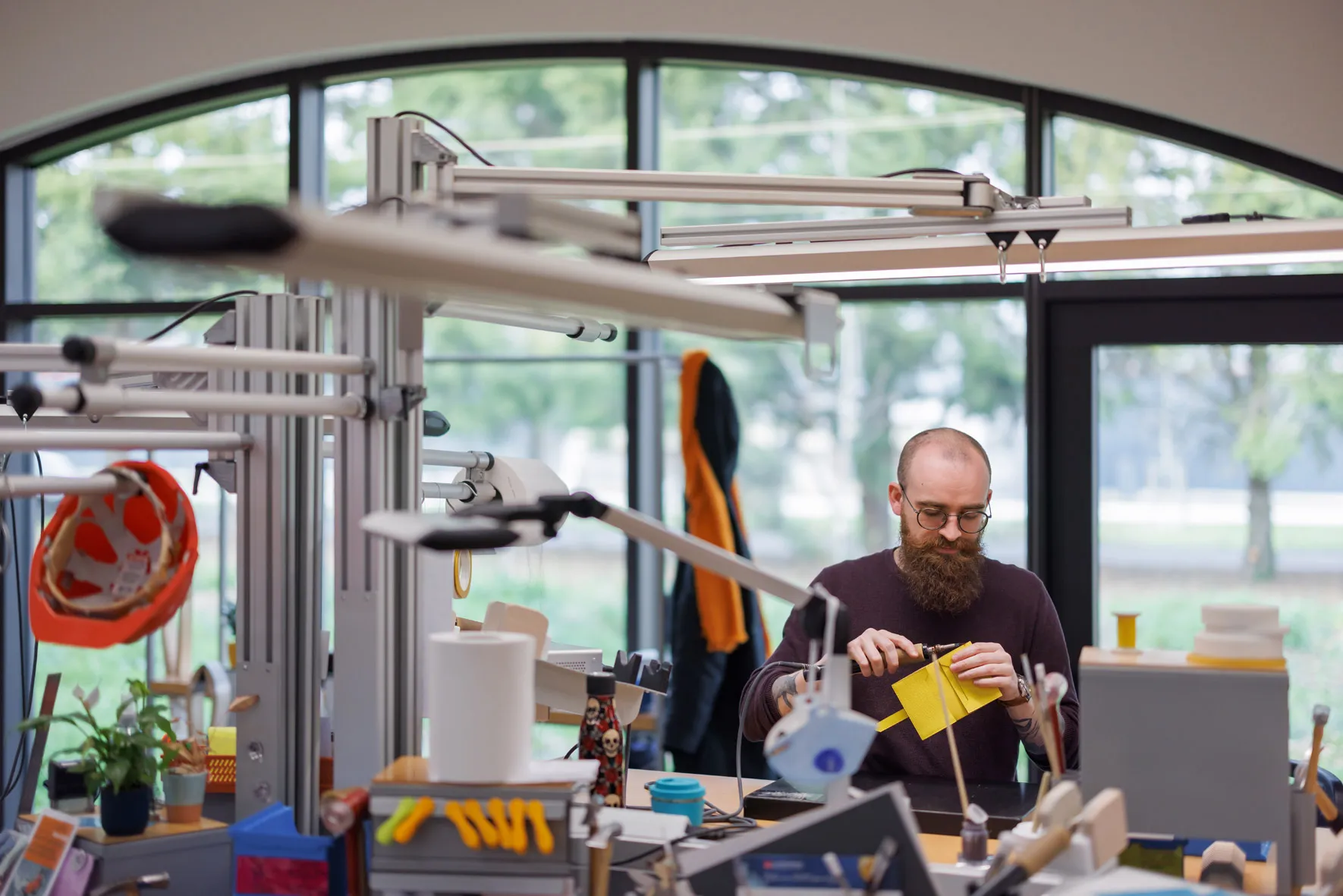
2
The same exterior arches, brick and otherwise, are featured in the workshop's interior spaces (left) used by the site's many craftspeople as workspaces (right). Photos © Iwan Baan
Though Hermès has not divulged construction cost, this, Ghotmeh says, is a frugal building that “tries to bring beauty to a context where nobody has bothered to care about beauty.” What she is referring to here is the southern, pedestrian entrance sequence—lateral facades are almost entirely blind, the eastern one fronted with asphalt for truck access—which is indeed beautifully handled. After leaving the car park, staff pass through an undulating naturalistic garden, landscaped by Erik Dhont using the soil excavated for construction, before arriving in a lovely series of outdoor brick-arched “rooms” (that could be enclosed later if operations grow) leading directly to the “village square,” from which the complex is entered. The building’s external materiality is certainly very poetic, a luxury touch that contributes both to Hermès’s brand image and to raising this industrial facility several cuts above the standard tin shed.
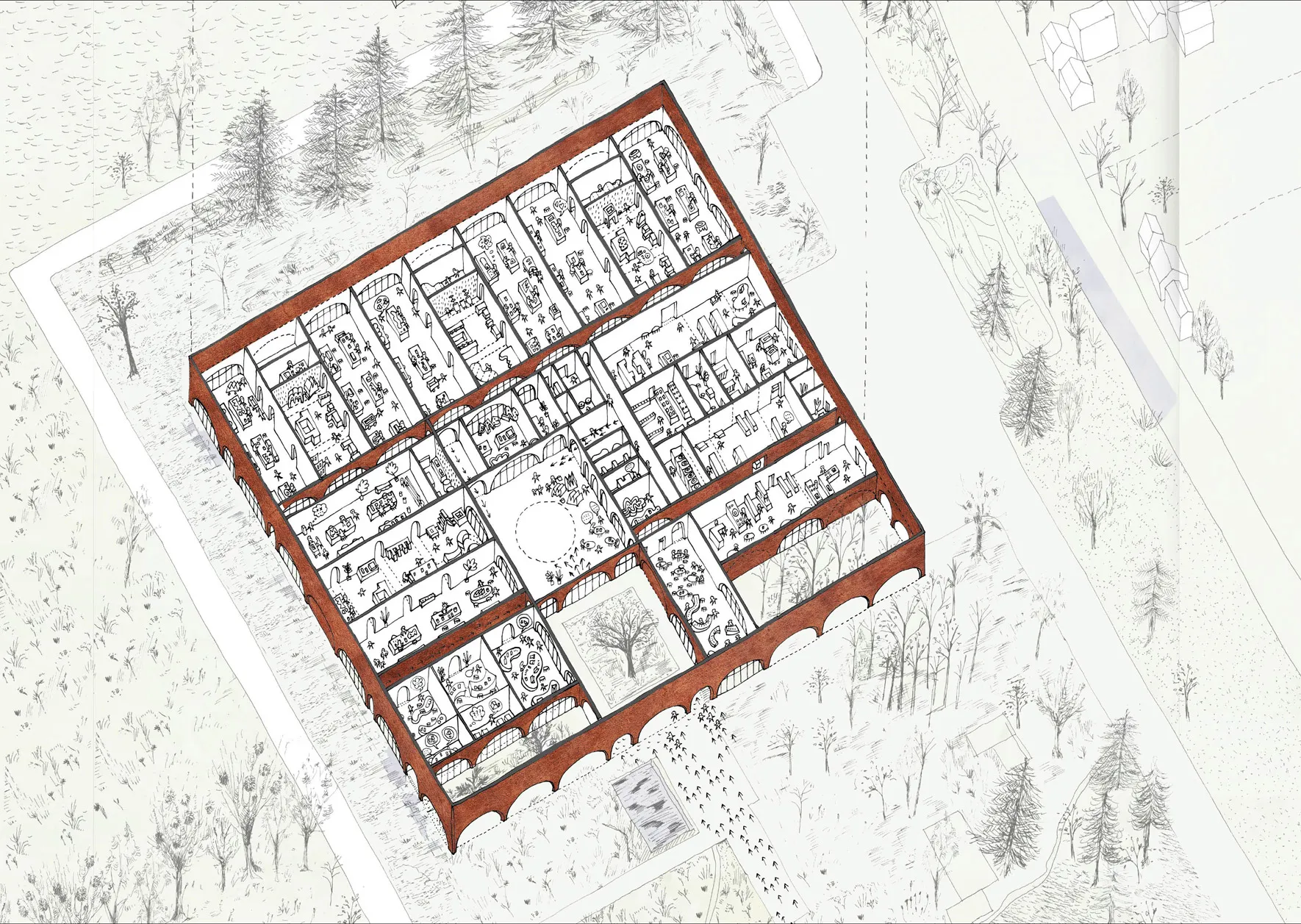
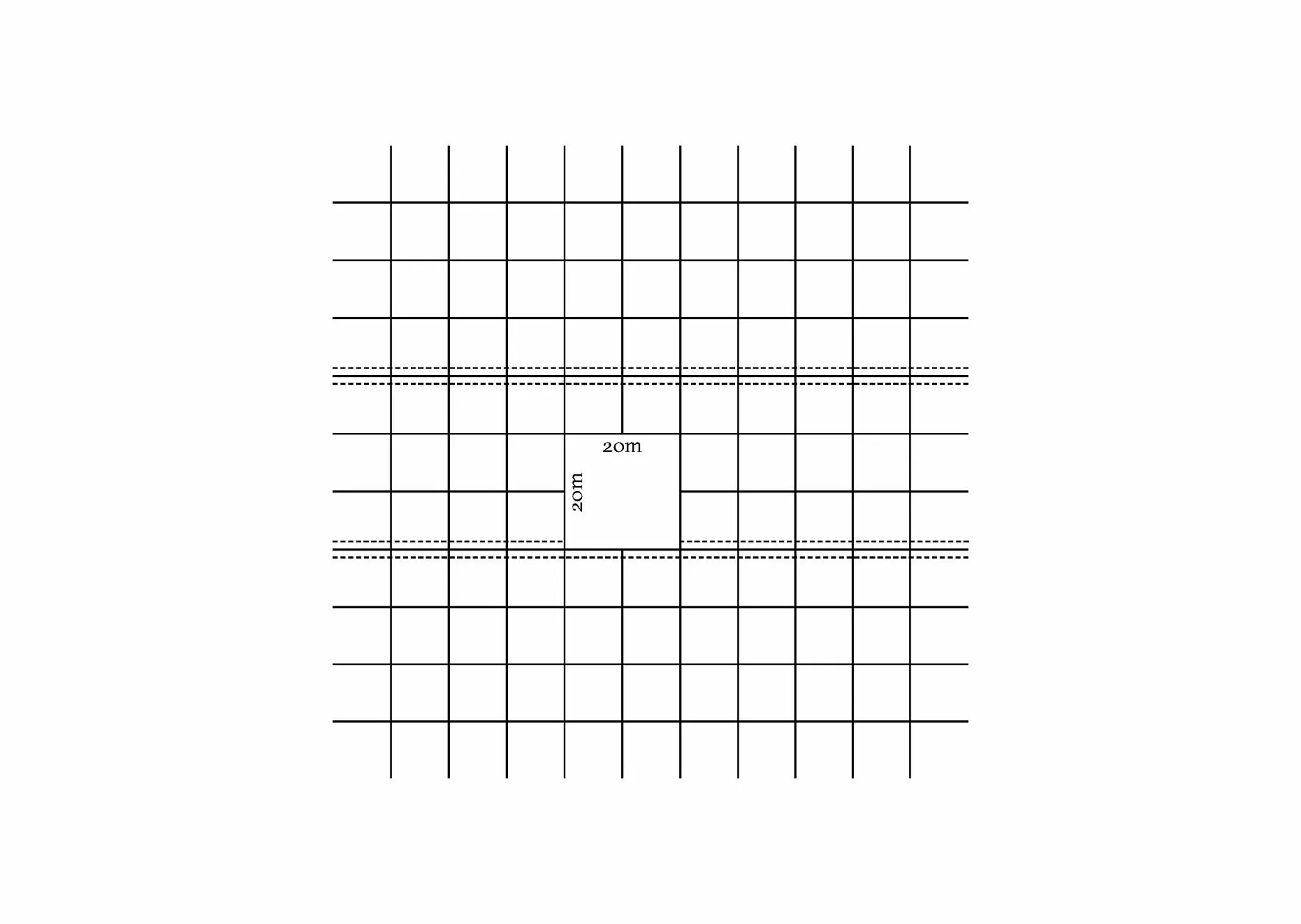
The square building recalls the shape of the company’s famous scarves, divided into 10-meter-bay modules.
Images © Lina Ghotmeh — Architecture



